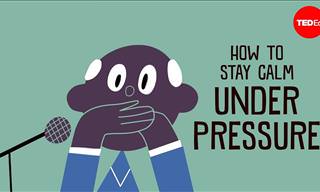

However, let’s be real here – how often do you really achieve this type of bliss? For many of us, we’re lucky if manage to wake up feeling semi-functional in the morning.
After we have come home from work, cooked dinner, helped the kids with their homework, tidied the house, we often want at least an hour of me time, This typically pushes our bedtime back to around midnight, and though we’re exhausted by that point, that doesn’t stop our racing mind from waking us up at points during the night.
However, what if we told you that you might be working against your body’s natural rhythm by forcing yourself to sleep in one 8-hour period?
Roger Ekrich, a historian and author, in his book “At Day’s Close: Night in Times Past, gives his readers a mammoth 500 references of civilizations, from ancient to living, that practice what he calls “segmented sleep.”
While this was and still is seen all over the world among distinct societies, there are a few differences when it comes to the nitty-gritty. For example, Ekrich found that segmented sleep almost always looks the same – it begins with a subject going to bed about two hours after dusk (this is the first sleep), then they wake up in the middle of the night for one or two hours (this is the waking period), and then the subject goes back to sleep for several more hours (this is the second sleep).

Early records have shown that the “waking period” between “first” and “second sleep” was a time that was often used for unwinding and leisure. In fact, 16th-century French physicians urged couples who were trying to conceive to have intercourse after they wake up from the first sleep, as the body is much more relaxed and rejuvenated following some sleep.
Ekrich’s research shows that segmented sleep was pretty much “put to bed” in the West by the turn of the 20th century. This is probably due to multiple factors, including the implementation of the modern 9-5 workday, as well as 19th century doctors urging parents not to wake children if they don’t naturally wake up after a “first sleep.”
This is an interesting concept, and one that we think can work well for some people. Who knows? Maybe in the future, doctors will start prescribing “first” and “second” sleep to their patients. Considering that an estimated 164 million Americans have struggled with insomnia at some point in their lives, it’s apparent that our ancestors went about this nightly ritual in a much better way.
Source: tiphero
Images: depositphotos
 5:15
5:15
Difficulty Sleeping? Try This Healthy Drink Before Bed
Struggling with sleep? This natural drink can help.

How to Stop Worrying and End Anxious Thoughts at Night
Are anxious thoughts hindering your sleep every night? Here’s what you can do.

21 Useful Guides, Charts, and Maps All of Us Need
These handy charts are full of useful information that we all need.

11 Grease Removal Tips You Wish You Knew Before!
Grease stains can be notoriously difficult to remove, but that will be a thing of the past if you use these 11 fantastic grease-removal methods.

This is What Happens When You Drink Just Water for 30 Days
If you don’t drink water for 3-5 days you’ll die, but what happens when you only drink water as your primary beverage? These great benefits happen, that's what!

There’s a Map for Literally EVERYTHING in the World!
These rare and unusual maps provide some unique information!

Maintain Your Brain: 15 Methods to Improve Brain Function
Like our muscles, the brain can also be strengthened and maintained in excellent condition, with proper practice. Learn 15 simple ways to train your brain today!
 15:50
15:50
These 27 Household Hacks Will Make Housework a Breeze
Doing housework can be such a drag sometimes, but these 27 household hacks are here to help!

6 Ways to Make Your Hands Look and Feel Younger
Give your hands a little TLC with these helpful remedies.

10 Useful Guides to Help You With Your Clothes
10 useful guides to help you in your daily struggle with clothes.

Shocking! This is What the Bar Code on Produce Means
What do the stickers on your produce mean? Find out here.

Here Are 10 Foods You Should Never Keep in the Pantry!
Are you the type of person who stores most of your food in the pantry? If so, you really must read this as there are foods that should never be stowed there!
 4:29
4:29
Important: How to Stay Calm Under Pressure
This video will teach you one of the most important skills in the world - how to stay calm under pressure

Maximise Your Kitchen Space with These Clever Hacks
Use these clever ideas to turn your kitchen into a room that works for you, with easier access to everyday items and better utilization of space.

7 Great Apple Cider Vinegar Uses for Your Dog!
Not many people are aware that you can use apple cider vinegar for their dog. Here's how!

5 Natural DIY Remedies for Blackhead Removal
In this article, we'll teach you to get rid of blackheads using 5 easy and effective at-home methods

Do You Know How to Use a Tape Measure? Are You SURE?
The humble tape measure is a more sophisticated tool than you thought...

I’ve Found a Natural Remedy for Those Red Bumps on the Skin
A natural remedy to erasing those red bumps that appear on your arms without visiting the dermatologist. You only need to ingredients, which are easily found at the grocery store.
 9:55
9:55
Shop Smart! How to Recognize Good or Poor Quality Clothes
This informative guide will explain the 5 major ways of spotting a poor and high quality garments

Your Ultimate Guide to Wearing that Suit!
A beginner's guide to wearing a suit the right way.

I Just Found the Most Useful Material in the House!
Toothpaste has so many uses - it's truly amazing. Next time you encounter any of these problems, turn to this list to find out how toothpaste can help.
 16:39
16:39
Save More Time in the Kitchen with These Gadgets & Hacks
28 kitchen hacks and gadgets that will save you time in the kitchen.
 2:22
2:22
Scent Your Home with this Simple 3-Ingredient DIY Diffuser!
I never knew making your own home diffuser can be this easy!
 7:53
7:53
Relieve Tired Eyes With These Simple Exercises
Ease the strain on your eyes with these simple and effective exercises.

The Best Time of Day to Eat Healthy Foods!
In this article we have outlined the best time of the day to indulge in some of your favorite foodstuffs.

10 Surprising Items You Can Clean in the Washing Machine
The washing machine can be useful for more than just clothes. 10 surprising items you can clean in the machine with no trouble.

16 Useful Charts & Guides That Teach You Surprising Things
Save these useful charts and guides. They will come in handy someday.

Calculate How Much Food & Drinks to Serve Your Guests
Planning out the perfect quantity of food for a party can seem like a tough task, but this guide makes it as easy as pie!
 17:23
17:23
Need a Quick Fix for Your Clothes? Keep These Tips in Mind..
Got a clothing mishap? Fix your clothes easily with these awesome tips.

Catch an Attacker Off-Guard with These Self Defense Moves
Learn a few simple moves and catch your attacker off guard with this simple guide.

9 Tips to Keep Your Sweater from Shedding This Winter
Winter is almost here, and it’s time to protect your sweaters from shedding.

15 Smart Alternative Uses for Bubble Wrap No One Told You
Bubble wrap can do much more than help you move!
 12:14
12:14
The 7 Dirtiest Spots in Your Home You Forget to Clean
Your home may not be as clean as you think. Here are seven dirty spots you are overlooking in your home

8 Terrific Additional Uses For Rubbing Alcohol!
Unsure about what you're meant to use rubbing alcohol for? Wonder no longer, as we've listed 8 brilliant uses of rubbing alcohol in this article.

Stunning! The Evolution of Beauty From 1952 to Today
Our definition of beauty may change as years go by but these pictures prove that true beauty is timeless.
 6:08
6:08
Fold a Napkin Into a Rose for a Unique Table Setting
Learn to set a table with napkin folding, giving a unique touch to your dinner table.

Try this Ancient Indian Method for Removing Body Hair
An ancient and natural method that both men and women have been using for centuries to get rid of unnecessary hair from their bodies.

Can My Dog Eat That? An Important Infographic for Dog Owners
If you want to keep your dog safe and happy, you need to know what foods they can and cannot eat.

Quick! Grab Some Steel Wool, and Here's What You Do...
We have compiled 11 tips for various household uses, along with a bonus tip you can use on a field trip.

Dog Can't Stay Alone? 5 Tips to Help Resolve Their Anxiety
When your dog shows anxiety when left alone, here are some tips to help you deal with the problem.
 5:50
5:50
10 Fantastic Food Hacks To Try At Home
Make your culinary experience as good as it can be using these 10 neat little kitchen hacks.

Dog Walking Tips and Tricks Everyone Should Know
Discover these effective tips and tricks for the perfect dog-walking routine.
 10:02
10:02
10 Delicious Microwave Hacks That Will Make Cooking Easier
Your microwave has a few more tricks up its sleeve! 10 more tricks, to be more precise, that will unlock your microwave's hidden potential.

Boost Your Happiness in These 22 Small, Easy Ways
Do these little things every day, to make you feel happy.

How to Choose, Cook and Prepare a Perfect Steak!
Most of us want to know how to cook the perfect steak, and now, thanks to these fantastic guides, we can!
 8:03
8:03
Christmas Tree Hacks: 9 Game-Changing Tips
Use these Christmas tree tips to make your holiday festivities easier.
 5:18
5:18
Women's Fashion Has Changed Quite a Bit Over the Century
Women's fashion has changed a great deal over the century. Take a look:


